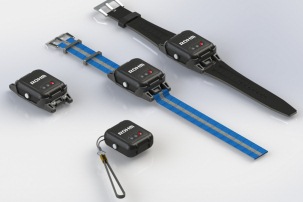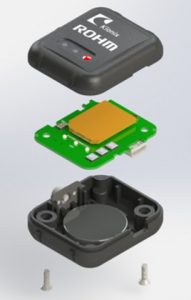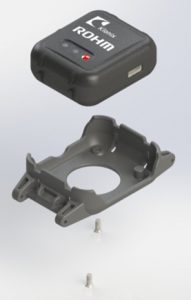Roki sensor node integrates multiple sensors with Bluetooth 5 / Bluetooth Low Energy SoC

ROHM and Kionix, Inc. have introduced the RoKi Sensor Node, a key component in the new RoKi IoT Platform. The sensor node utilizes Nordic Semiconductor’s nRF52840 Bluetooth 5/Bluetooth Low Energy (Bluetooth LE) advanced multiprotocol System-on-Chip (SoC), offering better throughput and longer range compared to the Bluetooth 4.2. It also has better coexistence with other wireless devices, and an increased broadcast capacity improving beacon functionality.
Nordic’s nRF52840 Bluetooth 5/Bluetooth LE SoC is Nordic’s most advanced ultra low power wireless solution. The SoC supports complex Bluetooth LE and other low-power wireless applications that were previously not possible with a single-chip solution. The SoC combines a 64MHz, 32-bit Arm Cortex M4F processor with a 2.4GHz multiprotocol radio with 1MB Flash memory and 256kB RAM. The chip supports all the features of Bluetooth 5 including 4x the range or 2x the raw data bandwidth (2Mbps) compared with Bluetooth 4.2.
The sensor node integrates multiple sensors from Kionix and Rohm. These sensors enable the measurement of 3D-acceleration, 3D-magnetism, 3D-rotation, atmospheric pressure, and temperature by default sensors. Expansion connectors enable the addition of more sensors such as an optical heart rate sensor, ambient light sensor, RGB color sensor, magnetic hall effect sensor, etc.

This makes it an excellent choice for prototyping and developing Consumer IoT (Internet of Things) applications ranging from wearables, health and wellness, games and toys, and smart home devices to Industrial IoT applications such as smart city sensor networks, asset management and logistics monitoring, factory automation, etc.
A key feature of RoKi Sensor Node is its focus on power, both in terms of flexibility and low power consumption. It can be powered by a rechargeable Li-Polymer battery, replaceable coin cell batteries, or via Micro USB. The automated power consumption system of the Bluetooth 5 SoC, and the configurable power management modes of the sensors, make the RoKi Sensor Node a long-running, low power consuming system with a small footprint. The active time is about 8 hours of typical usage, and an estimated standby time of 200 hours.

The RoKi Sensor Node comes in a compact (42x67x22mm) housing and has a programmable RGY LED, expansion capability with extended I/O connectors, and 64Mb of flash memory. The sensor node comes with a mounting accessory so one can attach it to surfaces with screws or connect a watch band for wearing it on one’s wrist.
Software packages supporting the RoKi Sensor Node include a Windows GUI with visualization and datalogging capability, a Python-based Command Line Interface (CLI), and an Android Data Logger App. The sensor node can be used with the Arm Mbed design tool, as well as Nordic Semiconductor’s nRF5 SDK, that enables secure over-the-air device firmware updates (OTA-DFU).
A working demo will be showcased at this year’s Sensors Expo held on June 27-28th at booth 516, at the McEnery Convention Center in downtown San Jose.
Comment on this article below or via Twitter @IoTGN
